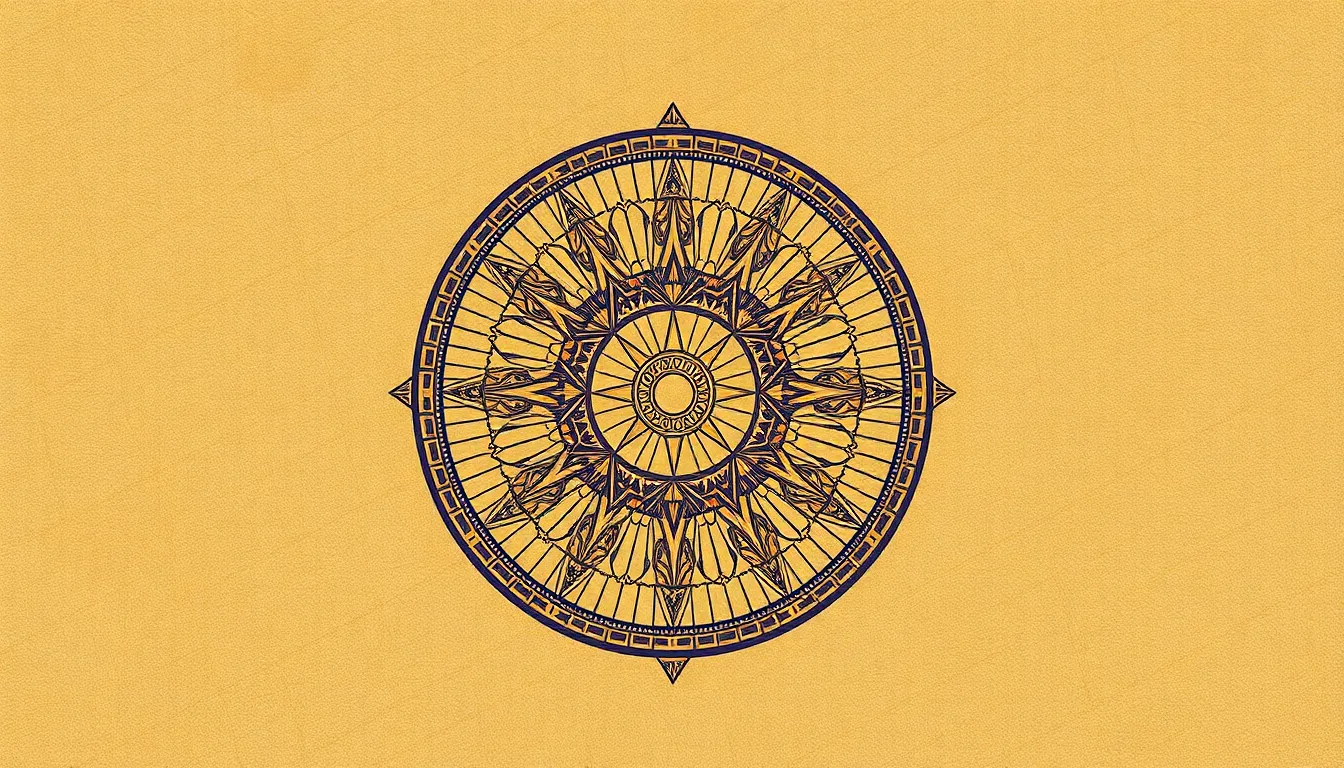Geometry of the Gods: Divine Patterns in Egyptian Art
Introduction: The Intersection of Geometry and Divinity
The ancient Egyptian civilization is renowned for its remarkable achievements in art and architecture, where geometry played a critical role. Geometry in this context is not merely a mathematical tool but a profound language through which the Egyptians expressed their understanding of the cosmos and their relationship with the divine. The patterns and forms found in Egyptian art and architecture reflect their beliefs, rituals, and the very essence of their spirituality.
This article explores the significance of geometry in ancient Egyptian culture, particularly how divine patterns manifest in their artistic expressions, from monumental architecture to intricate hieroglyphs.
Historical Context: Geometry in Ancient Egypt
Ancient Egypt, flourishing from around 3100 BCE to 30 BCE, was characterized by a rich cultural heritage and a deep spiritual life. The Egyptians developed a unique artistic tradition that was closely linked to their religious and societal norms. Artistic expressions, whether in painting, sculpture, or architecture, were often designed to serve religious purposes, embodying the beliefs of the time.
Geometry played a pivotal role in the evolution of Egyptian architecture and sculpture:
- Architectural Precision: The construction of temples and pyramids required precise geometric calculations.
- Symbolic Representation: Shapes and forms were carefully chosen to convey specific meanings.
- Structural Integrity: The use of geometric principles ensured the durability and stability of monumental structures.
Sacred Geometry: The Language of the Gods
Sacred geometry refers to the geometric shapes and proportions that hold symbolic meanings in various cultures. In ancient Egypt, certain geometric figures were considered sacred and were believed to connect the earthly realm with the divine.
Some key geometric shapes found in Egyptian art include:
- Circle: Symbolizing eternity and the cyclical nature of life.
- Triangle: Often associated with the pyramids, representing the connection between earth and the heavens.
- Square: Symbolizing stability and the material world.
These shapes were not merely decorative; they were imbued with spiritual significance, reflecting the Egyptians’ understanding of the universe and their place within it.
Patterns in Architecture: The Pyramids and Temples
The architectural marvels of ancient Egypt, particularly the pyramids and temples, exemplify the application of geometric principles. The design of these structures was meticulously calculated to align with celestial bodies and reflect the Egyptians’ beliefs about the afterlife and the divine.
Case studies of notable structures include:
- The Great Pyramid of Giza: This pyramid showcases the use of precise angles and proportions, aligning with the cardinal points and the stars.
- The Temple of Karnak: A complex of temples that exhibit elaborate geometrical layouts, symbolizing order and harmony in the universe.
These structures were not only architectural feats but also expressions of the Egyptians’ worldview, where geometry served as a bridge between the earthly and the divine.
Symbolism in Egyptian Art: Geometry in Iconography
The use of geometric patterns extends beyond architecture into hieroglyphs and religious iconography. The Egyptians employed symmetry and proportion in their artwork to represent the divine order of the universe.
Key aspects include:
- Hieroglyphs: These symbols often contained geometric elements that conveyed meanings beyond their literal interpretation.
- Divine Beings: The representation of gods and goddesses frequently adhered to strict proportions, emphasizing their perfection and divinity.
The interplay of geometry and iconography in Egyptian art served to reinforce the spiritual beliefs of the civilization, illustrating the harmony between the physical and spiritual realms.
Color and Geometry: The Aesthetics of Egyptian Art
Color, when combined with geometric patterns, enhanced the aesthetic appeal and spiritual significance of Egyptian art. The careful selection of colors was intentional, as each hue carried its own symbolic meaning.
Key interactions between color and geometry include:
- Psychological Effects: Colors were chosen to evoke specific emotions and responses from viewers.
- Spiritual Significance: Certain colors were associated with particular deities or concepts, reinforcing the divine message conveyed through geometric forms.
This synergy between color and geometry created a rich visual language that communicated complex ideas and beliefs in a compelling manner.
Modern Interpretations: The Legacy of Egyptian Geometry
The influence of ancient Egyptian geometric patterns continues to resonate in contemporary art and architecture. Many modern artists and architects draw inspiration from the timeless designs of ancient Egypt, incorporating geometric motifs into their work.
Examples of modern interpretations include:
- Art Movements: Many movements, such as Art Deco, have drawn on Egyptian motifs for their aesthetic.
- Architectural Design: Contemporary buildings often reflect the geometric principles found in ancient Egyptian architecture.
This ongoing legacy highlights the relevance of Egyptian geometry in today’s creative expressions, bridging the past and the present.
Conclusion: The Enduring Influence of Divine Geometry
The geometric principles evident in ancient Egyptian art and architecture reveal a rich tapestry of spirituality, creativity, and cultural identity. The enduring influence of these divine patterns can be seen across various cultures and disciplines, reminding us of the profound connections between geometry, spirituality, and human creativity.
As we reflect on the legacy of Egyptian geometry, we recognize its role in shaping not only the artistic landscape of the ancient world but also its impact on modern aesthetics and philosophy. The relationship between geometry and the divine continues to inspire and resonate with us today, emphasizing the timeless nature of these sacred forms.




